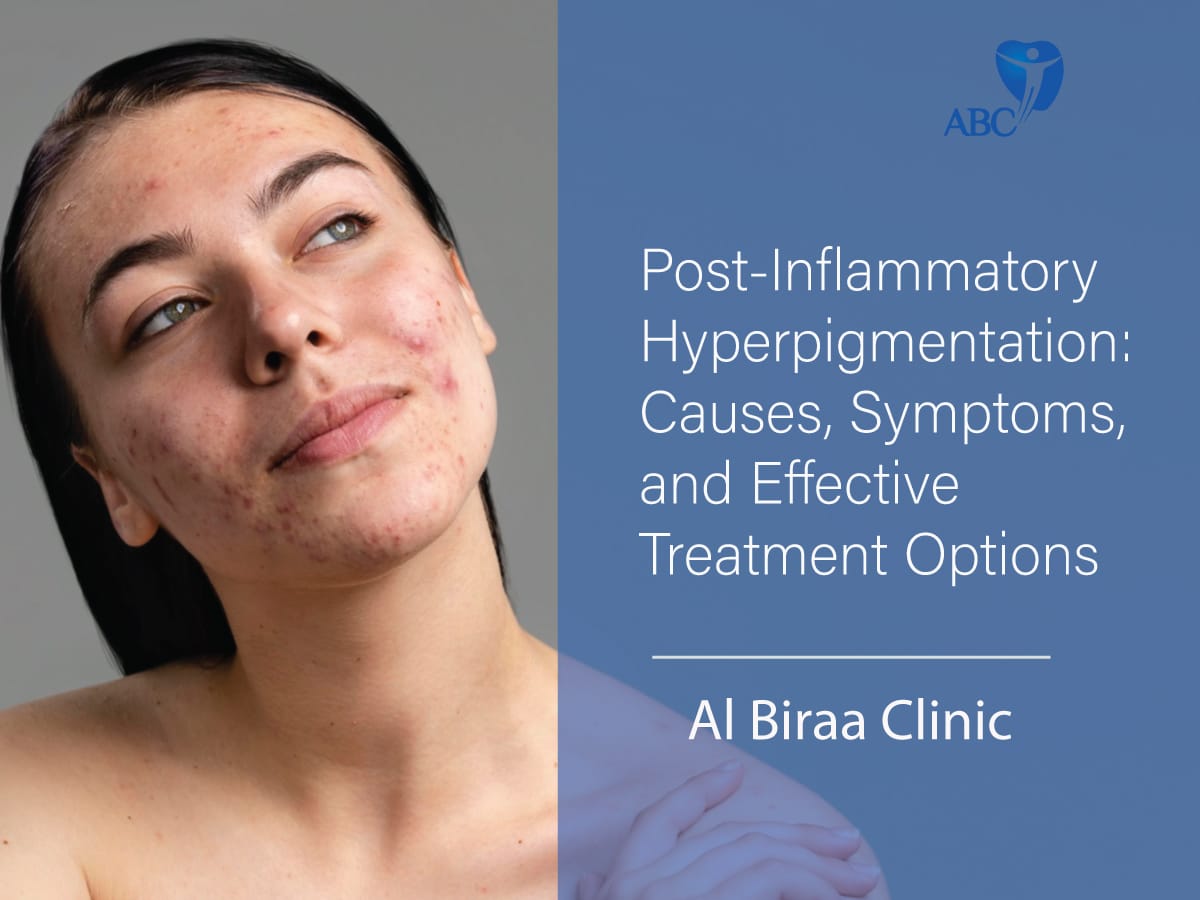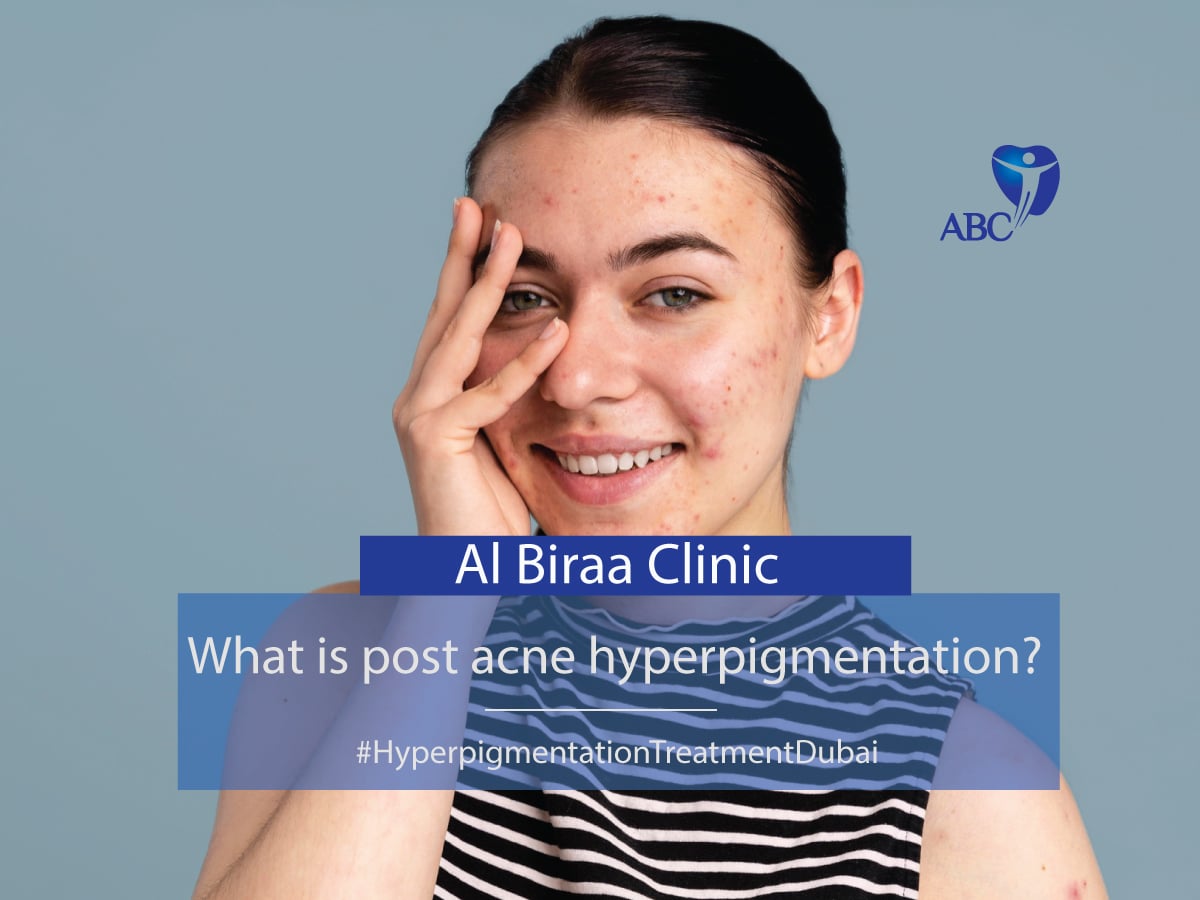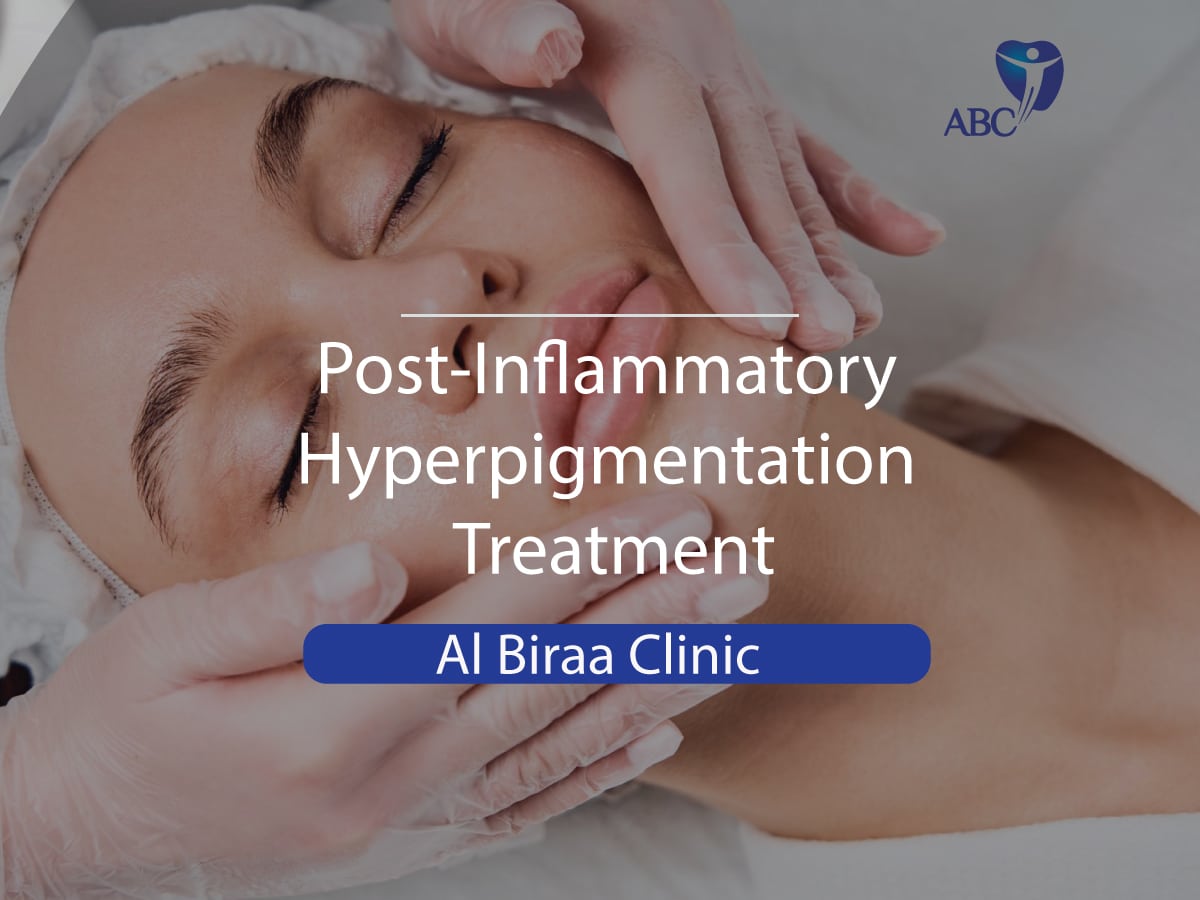
Post-inflammatory hyperpigmentation (PIH) is a common skin condition that occurs when the skin experiences inflammation, such as from acne, eczema, or a cut. PIH causes darkening of the skin in the affected area, which can be unsightly and difficult to treat.
The pigmentation is caused by an overproduction of melanin in response to the inflammation. Melanin is the pigment that gives skin its color, and an increase in its production can cause the skin to become darker than usual.
PIH typically fades over time, but it can take several months to a year for the skin to return to its normal color. However, there are some treatments that can help speed up the process of fading the pigmentation.
Best treatment for pigmentation on the face | Al Biraa Clinic Dubai
The best treatment for pigmentation on the face will depend on the cause of the pigmentation and the individual’s skin type. However, here are some effective treatment options that can help reduce pigmentation on the face:
- Topical treatments: Topical treatments, such as hydroquinone, retinoids, and azelaic acid, can help reduce pigmentation on the face. These treatments work by inhibiting melanin production or accelerating skin cell turnover, which can help fade dark spots over time.
- Chemical peels: Chemical peels involve applying a chemical solution to the face, which exfoliates the skin and helps reduce pigmentation. Different types of peels are available, and a dermatologist can help determine which type is best for your skin type and pigmentation.
- Laser therapy: Laser therapy uses a laser to target and break down the pigmented cells in the skin. This treatment can be effective for reducing pigmentation, but it may require multiple sessions and be expensive.
- Microdermabrasion: Microdermabrasion is a non-invasive treatment that uses a special device to exfoliate the top layer of skin, which can help reduce pigmentation on the face.
- Sun protection: Protecting your skin from the sun’s UV rays is crucial to preventing and reducing pigmentation on the face. Wearing sunscreen with an SPF of 30 or higher and avoiding sun exposure during peak hours can help prevent further pigmentation.
It’s important to consult a dermatologist to determine the best treatment plan for your individual needs and skin type. They can help you choose the most effective treatment option and provide guidance on how to prevent further pigmentation.

Post acne hyperpigmentation (PAH) refers to dark spots or patches that appear on the skin after an acne breakout has healed. It is a common condition that affects many individuals who have had acne. PAH occurs due to an overproduction of melanin, the pigment responsible for the color of our skin, hair, and eyes.
When acne lesions heal, they can leave behind areas of increased pigmentation, leading to dark spots or patches on the skin. This happens because inflammation caused by acne triggers an increase in melanin production in the affected area. The excess melanin becomes concentrated in certain areas, resulting in hyperpigmentation.
Post acne hyperpigmentation can vary in color, ranging from pink, red, brown, and black, depending on the individual’s skin tone and the amount of melanin produced. The dark spots, or patches, are typically flat and can be scattered across the affected area or concentrated in specific regions.
PAH is different from acne scars, which are caused by damage to the skin’s collagen during the acne healing process. Unlike scars, hyperpigmentation does not involve a change in the texture of the skin and can fade over time without leaving permanent marks.
It’s important to note that post acne hyperpigmentation is a cosmetic concern and does not cause any physical harm. However, it can have a significant impact on a person’s self-esteem and confidence. Fortunately, there are various treatments available, such as topical creams, chemical peels, laser therapy, and microdermabrasion, that can help reduce the appearance of post acne hyperpigmentation and promote an even skin tone. Consulting a dermatologist is recommended for an accurate diagnosis and appropriate treatment options.
Melasma and post-inflammatory hyperpigmentation (PIH)
Melasma and post-inflammatory hyperpigmentation (PIH) are both conditions that involve the darkening of the skin, but they have distinct differences in their causes, triggers, and treatments.
Melasma is a common skin disorder characterized by the development of brown or gray-brown patches on the face, particularly on the cheeks, forehead, nose, and upper lip. It is believed to be influenced by hormonal factors, as it often occurs during pregnancy (known as “pregnancy mask” or “chloasma“) or with the use of hormonal contraceptives. Sun exposure is also a known trigger for melasma, as ultraviolet (UV) radiation can stimulate the production of melanin, the pigment responsible for skin color.
On the other hand, post-inflammatory hyperpigmentation (PIH) occurs as a result of inflammation or injury to the skin. It can be triggered by various factors such as acne, eczema, psoriasis, burns, cuts, or even cosmetic procedures. When the skin experiences inflammation or trauma, the body produces excess melanin as part of the healing process, leading to darkened patches or spots.
While both melasma and PIH involve an overproduction of melanin, the key difference lies in the underlying causes. Melasma is primarily influenced by hormonal factors and sun exposure, whereas PIH is triggered by inflammation or injury to the skin.
In terms of treatment, melasma treatment and PIH may require different approaches. Melasma often requires a combination of treatments, including topical creams or serums containing ingredients like hydroquinone, retinoids, azelaic acid, or kojic acid. Chemical peels, microdermabrasion, or laser therapy, LED therapy may also be utilized in some cases. Sun protection, such as wearing sunscreen and using protective clothing, is crucial in managing melasma.

Post-Inflammatory Hyperpigmentation Treatment
When it comes to treatment, Al Biraa Clinic has explored various options that can help fade and lighten the darkened areas of the skin. Topical treatments like hydroquinone, retinoids, and corticosteroids are commonly used to target PIH. Additionally, procedures like chemical peels, microdermabrasion, and laser therapy can also be effective in improving the appearance of post-inflammatory hyperpigmentation. It may vary depending on the patient’s skin condition and their customized needs.
The results may not be immediate, and it may take several weeks or even months to see noticeable improvements. It is very important to consult with a dermatologist or skincare professional for a personalized treatment plan tailored to your specific needs. Don’t treat people personally at home.
Lastly, it is crucial to maintain a positive mindset throughout the treatment process. PIH can be distressing, but remember that it is a temporary condition that can be effectively managed. With proper care, patience, and the right treatment approach, you can achieve a more even, radiant complexion and regain your confidence.
If you have concerns about your skin or are experiencing persistent or severe symptoms of PIH, please consult our aesthetic skin or healthcare professional for proper evaluation and guidance, during the clinic consultation. We at Al Biraa Clinic Dubai, always try to do things passionately with customer satisfaction in mind.



